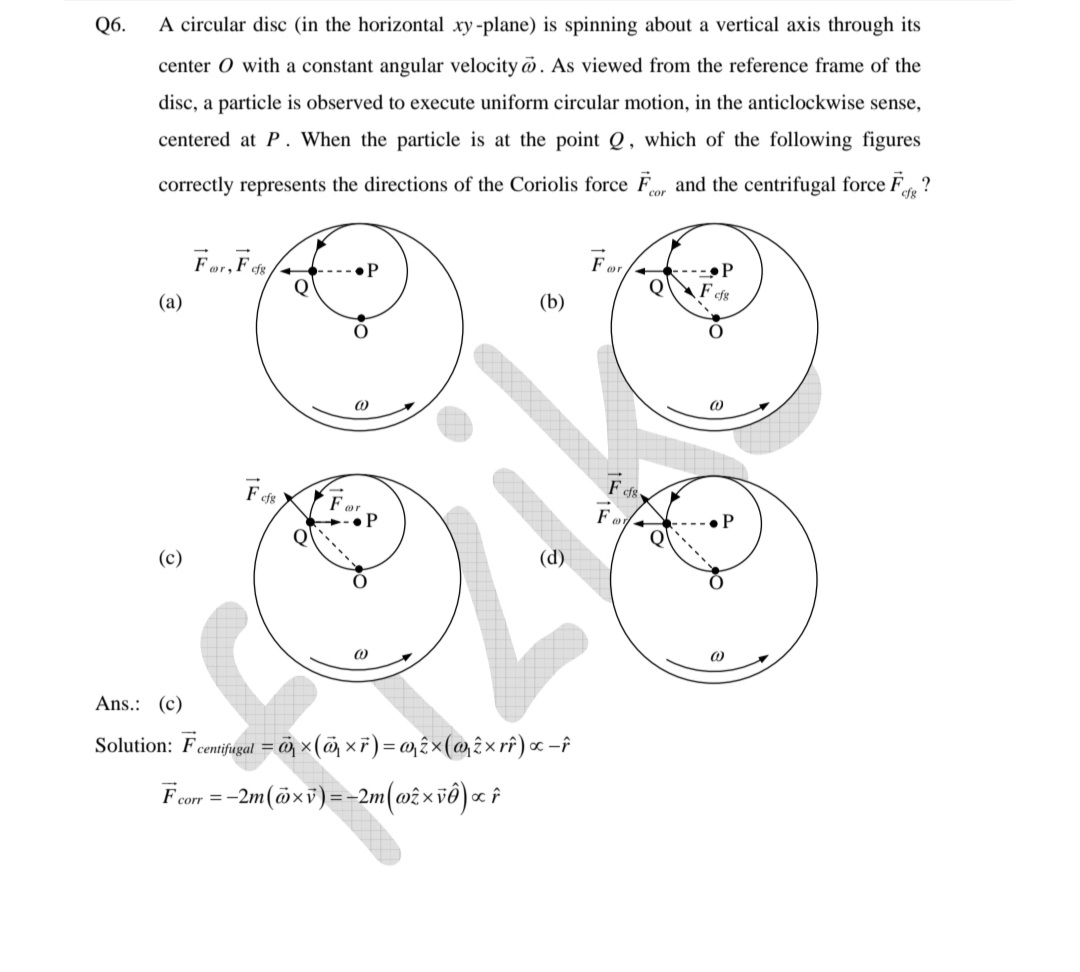I can't understand how the cross product of $\hat{\mathbf{z}}$ and $\hat{\mathbf{r}}$ works in the equation of centrifugal force and the same cross product between $\hat{\mathbf{z}}$ and $\hat{\boldsymbol{\theta}}$ in the equation for Coriolis force. Please help me understand this.
According to my understanding, the cross product between $\hat{\mathbf{z}}$ and $\hat{\boldsymbol{\theta}}$ is along the direction that is completely opposite to the direction that is given here, i.e. rotate the Coriolis vector ($\mathbf{F}$) given in the answer by 180°. I can't even begin to comprehend how the direction of centrifugal force is found here.

